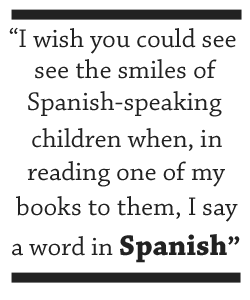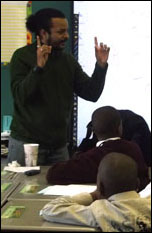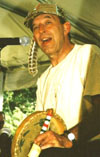 Guest blogger Katie Cunningham is an Assistant Professor at Manhattanville College. Her teaching and scholarship centers around children’s literature, critical literacy,
Guest blogger Katie Cunningham is an Assistant Professor at Manhattanville College. Her teaching and scholarship centers around children’s literature, critical literacy,  andsupporting teachers to make their classrooms joyful and purposeful. Katie has presented at numerous national conferences and is the editor of The Language and Literacy Spectrum, New York Reading Association’s literacy journal.
andsupporting teachers to make their classrooms joyful and purposeful. Katie has presented at numerous national conferences and is the editor of The Language and Literacy Spectrum, New York Reading Association’s literacy journal.
Spring is here and with that spring fever for many students who will be graduating from a significant milestone and moving on to the next stage of their lives. Graduating students will hear speeches that urge them to seize the day, to work hard, to stand out amongst the crowd, and to answer the question “Who will you be?”. The Common Core State Standards are written with this day in mind. While the standards are designed to raise the level of education that any child receives regardless of socioeconomic status, race, gender, and language, the standards alone do not put children on the path to college and a career. We cannot overlook that some students see themselves from a very early age as “card carrying members” in college settings while others feel displaced. Before we can ask our students “Who will you be?”, we need to wonder “Who do our students believe they can be?”
 The last few springs I’ve hosted seventy-five fifth graders to the college campus where I’m an Assistant Professor. These fifth graders attend a school where 93% are of Latino descent, 85% have reduced or free lunch, and almost 40% have limited English proficiency. For many of them this experience is their first time on a college campus and the vast majority will be the first generation in their families to attend college. The trip is only five miles by school bus, yet our campus is a world away for many students. The trip is designed to give fifth graders the sense that they are card-carrying members. That they belong here. That they are on the road to college as a pathway to a career.
The last few springs I’ve hosted seventy-five fifth graders to the college campus where I’m an Assistant Professor. These fifth graders attend a school where 93% are of Latino descent, 85% have reduced or free lunch, and almost 40% have limited English proficiency. For many of them this experience is their first time on a college campus and the vast majority will be the first generation in their families to attend college. The trip is only five miles by school bus, yet our campus is a world away for many students. The trip is designed to give fifth graders the sense that they are card-carrying members. That they belong here. That they are on the road to college as a pathway to a career.
As educators and parents, we know that college and career-readiness cannot simply be reduced to a series of skills-based standards. Rather, it’s a complex topic with social, cultural and political considerations that go far beyond the classroom. I believe we can enact curriculum that centers the standards in engaging and joyful ways, but what can we do to rewrite history for many of our students who face obstacles inside and outside our classrooms everyday? We can bring them to college campuses and support them to see themselves as members of intellectual communities. We can also support students beyond single events to routinely consider what guides us and what has guided people before us to reach their dreams. Harvard Professor Ronald Ferguson established five core principles I believe our schools must teach long before and alongside any reading, writing, or math lessons:
Continue reading →
 Our recent grant from First Book prompted us to ask our authors to reflect on why diverse books are important. Guest blogger,
Our recent grant from First Book prompted us to ask our authors to reflect on why diverse books are important. Guest blogger, ![]() author/poet Pat Mora, talks about witnessing the special connection Spanish-speaking children make with books that include their culture and language.
author/poet Pat Mora, talks about witnessing the special connection Spanish-speaking children make with books that include their culture and language. 


 In light of our grant from
In light of our grant from 

 One of my favorite poems is by the late Karla Kuskin: “Write About a Radish…,” which begins:
One of my favorite poems is by the late Karla Kuskin: “Write About a Radish…,” which begins: In light of our recent grant from
In light of our recent grant from  A favorite poem of mine to read aloud is “Amazing Face” by Rebecca Kai Dotlich, the opening verse of my collection,
A favorite poem of mine to read aloud is “Amazing Face” by Rebecca Kai Dotlich, the opening verse of my collection, 
